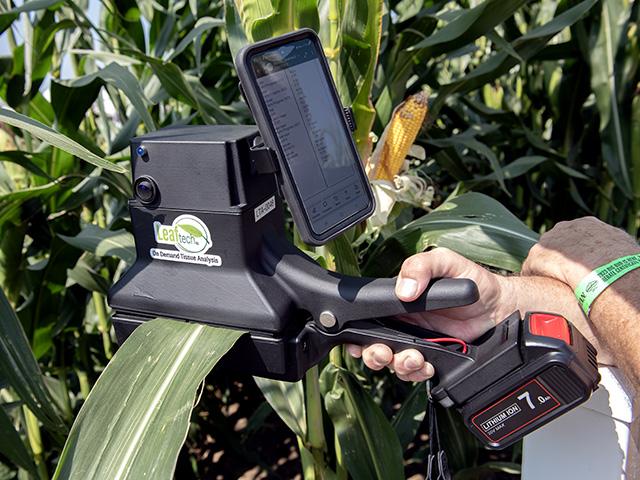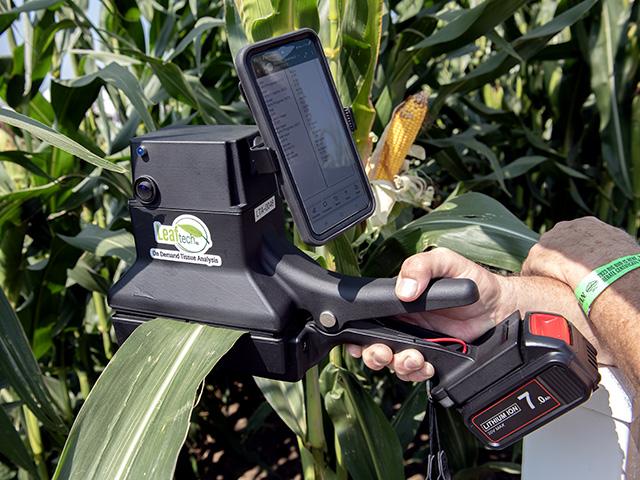Production Blog
2024 Commodity Classic Wrap-Up: 4 Crop Product Takeaways
JEFFERSON CITY, Mo. (DTN) -- If Commodity Classic was a Hollywood blockbuster movie, then this year's edition could have been prefaced with one of those warnings about flashing lights. From the first step onto the trade show floor, the 2024 event provided sensory overload that could certainly disorient the uninitiated.
Billed as "America's largest farmer-led, farmer-focused agricultural and educational experience," the event began in 1996 and has become an annual pilgrimage for many. A new registration record of 11,530 was set at this year's show, which was held in Houston at the George R. Brown Convention Center.
During my three days there, I logged more than 16 miles traipsing back and forth between a trade show so large that it took two floors to hold it and the many educational sessions, press gatherings and social events that were held. There were 435 exhibitors this year, and while it wasn't hard to miss companies with large booths -- John Deere's display covered literally an acre of trade show floor -- there were also many new ideas and products hiding in plain sight in booths barely wider than an 8-foot-long folding table.
Here's a few items from companies large and small that caught my attention this year:
LEAFTECH AG TISSUE SAMPLER
Traditional plant tissue sampling offers farmers a glimpse into the health of their crops and helps them identify nutritional deficiencies, but the process can be time-consuming and costly. John Mascoe, founder and owner of LeafTech Ag, believes that he's found a better way.
His company has developed a handheld scanner that uses multi-spectral bands of light to determine the nutrient content of a crop leaf. The scanner detects levels of both macro- and micronutrients, including nitrogen, phosphorus, potassium, sulfur, boron, zinc, manganese, iron, copper, calcium and magnesium. It also determines leaf water content.
"A farmer or a crop consultant can go in and literally take hundreds of data points in a field that are all geo-referenced," Mascoe said. "They can create a nutrient zone map and develop a prescription before they leave the field, then target apply what that crop needs."
Mascoe said the scanner provides data that is up to 97% accurate when compared to lab samples. Whereas it can take a traditional lab three to five days to provide results from a single composite sample at a cost ranging from $15 to $50, a farmer can take an unlimited number of scans and have results in three to five minutes after uploading via an app on their mobile device.
"The scanner doesn't destroy the plant, either," he explained. "So, you can go back to the same plant and even the same leaf and see how the crop responded to your management. We can delineate more zones for targeted applications of the right nutrients, in the right amount, at the right time, in the right location. The 4Rs is easily implemented because we have hundreds of data points."
P[L1] D[0x0] M[300x250] OOP[F] ADUNIT[] T[]
Farmers don't purchase the scanner. Instead, they sign up for an unlimited scans subscription for the season. The cost for a season is currently $15,000. Learn more here: https://newfieldsag.com/….
PIONEER Z-SERIES SOYBEANS
While Corteva announced its new Z-Series of soybean varieties last fall, the company offered more details about the beans at Commodity Classic.
It's Pioneer's sixth soybean series and represents the company's largest advancement class. In company field trials in 2023, the Z-Series soybeans showed an average yield advantage of 2.7 bushels per acre (bpa) over its current A-Series. In addition to the increase in yield, the new class features improved scores in sudden death syndrome, brown stem rot, white mold and iron deficiency chlorosis, said Don Kyle.
The Z-Series will include more than 50 soybean varieties in the United States and 20 varieties in Canada, ranging in relative maturity from MG 00.3 to MG 6.4. A total of 13 varieties will offer stacked Peking genetic resistance to soybean cyst nematode (SCN) with phytophthora resistance, which is welcome news for many regions where the PI 88788 resistance source has begun to lose its effectiveness. SCN represents the largest soybean pest, costing farmers roughly $1.5 billion annually, according to the SCN Coalition.
Liz Knutson, Pioneer U.S. soybean marketing lead, said that while the Z-Series will have limited availability in 2024, the company expects to have close to a half-million acres of the new varieties planted across the country this year.
"We've got our production plans for next year, and over 50% of our commercial volume sold in 2025 will be Z-Series soybeans," she said.
Most of the new Z-Series varieties contain the Enlist E3 trait. For the southern United States, four varieties contain the sulfonylurea tolerance soybean (STS) gene and BOLT technology for greater sulfonylurea tolerance.
BAYER HT4 SOYBEANS & PRECEON SMART CORN
Like Corteva, Bayer also has previously announced its latest advances in soybean and corn seed development and herbicides, but it too provided more details and timelines during the Houston event.
HT4 represents Bayer's fourth generation of herbicide technology in soybeans, and this latest effort is set to become the industry's first five-tolerance trait stack. Like current XtendFlex soybeans, the HT4 varieties will be tolerant to glyphosate, glufosinate and dicamba. However, Bayer adds tolerance to 2,4-D and mesotrione, an HPPD (Group 27) herbicide, with HT4.
"While 2,4-D tolerance is not necessarily new to soybean growers, a lot of people are excited about adding the mesotrione trait," said Frank Rittemann, Bayer launch lead, soybean technology. "Up until this point, soybean growers haven't been able to utilize that tool, and bringing in some of the unique properties that mesotrione has will really be a game changer for soybean growers."
Rittemann noted that not all HPPD herbicides are created equal. Some are more effective as contact herbicides, while others are better suited for residual control. Mesotrione brings the best of both worlds, he said.
"It's a very good contact herbicide and also has great residual properties, primary targeting broadleaf weeds, which is what we're after with waterhemp and Palmer (amaranth)," he said. "It will have utility for soybean growers serving as a pre-emergent herbicide as well as an in-crop herbicide."
Rittemann said that currently, Bayer is anticipating the launch of HT4 soybeans in 2027.
Bayer also provided updates about its Preceon Smart Corn System, commonly referred to as "short-stature corn." Erica Strittmatter, corn trait launch and marketing lead, said that after having Preceon hybrids on about 30,000 acres in 2023, Bayer is increasing to about 35,000 acres with 385 farmers in what she called a "soft introductory launch."
"This year, we've got farmers in Iowa, northern Illinois and northern Indiana," she said. "We also have some trials in Nebraska, Minnesota and Wisconsin."
Currently, Preceon hybrids are based on breeding traits, but Strittmatter said that Bayer is working to gain approval for a genetically modified trait that will allow for more consistent plant heights and ear heights and allow seed production volumes to grow faster. That trait could be approved by 2028 pending regulatory approvals.
Commodity Classic is presented annually by the American Soybean Association, National Corn Growers Association, National Association of Wheat Growers, National Sorghum Producers and the Association of Equipment Manufacturers. To learn more, visit www.commodityclassic.com.
Jason Jenkins can be reached at jason.jenkins@dtn.com
Follow him on X, formerly known as Twitter, @JasonJenkinsDTN
(c) Copyright 2024 DTN, LLC. All rights reserved.






Comments
To comment, please Log In or Join our Community .